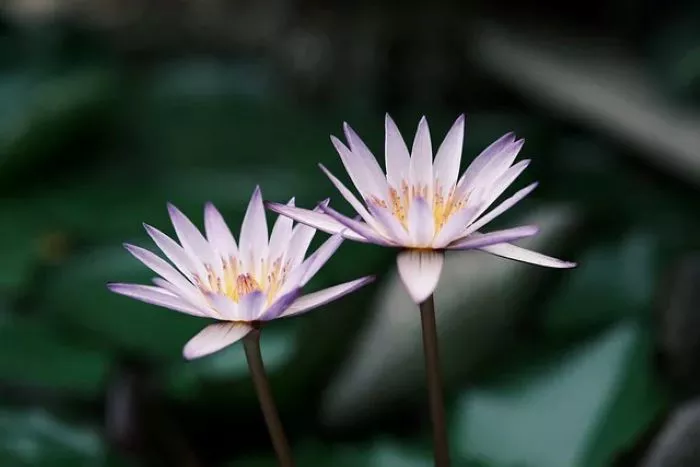Lotus flowers, scientifically known as Nelumbo nucifera, are celebrated for their stunning beauty and unique characteristics. These aquatic plants thrive in muddy waters and are renowned for their ability to bloom above the surface. One of the most captivating aspects of lotus flowers is their wide range of colors. Each color carries its own symbolism and significance. This article explores the various colors of lotus flowers and their meanings in different cultural contexts.
Overview of Lotus Flower Colors
Lotus flowers come in several colors, including white, pink, blue, red, and yellow. Each color variation is not only visually striking but also rich in meaning. The color of a lotus flower can influence its interpretation in art, religion, and personal symbolism.
White Lotus
The white lotus is perhaps the most recognized variety. It symbolizes purity, spiritual enlightenment, and tranquility. The petals of the white lotus are pristine and often associated with the idea of spiritual awakening.
Cultural Significance: In Buddhism, the white lotus represents the purity of the mind and spirit. It is often depicted in religious art and iconography, symbolizing the journey towards enlightenment. In Hinduism, the white lotus is associated with several deities, including Lakshmi, the goddess of wealth and prosperity.
Symbolism: The white color signifies purity and innocence. It represents the idea of rising above worldly attachments and achieving spiritual growth.
Pink Lotus
The pink lotus is considered the supreme lotus and is highly revered in many cultures. Its vibrant color symbolizes love, compassion, and spiritual awakening.
Cultural Significance: In Buddhism, the pink lotus is often associated with the historical Buddha and represents the heart of spiritual teachings. It is a symbol of divine beauty and purity of heart.
Symbolism: The pink color signifies love and compassion. It embodies the idea of unconditional love and the importance of nurturing relationships.
Blue Lotus
The blue lotus, also known as the blue water lily, is a symbol of wisdom and knowledge. It is unique among lotus flowers for its striking blue color and its association with the intellect.
Cultural Significance: In ancient Egyptian culture, the blue lotus was associated with the sun and creation. It symbolized the victory of the spirit over the senses and was often depicted in art and mythology.
Symbolism: The blue color signifies wisdom and enlightenment. It represents the pursuit of knowledge and the importance of understanding one’s true self.
Red Lotus
The red lotus is a symbol of love, passion, and deep emotional connections. Its rich color and striking appearance make it a favorite among flower enthusiasts.
Cultural Significance: In Hinduism, the red lotus is often linked to the heart and is a symbol of love and devotion. It is frequently associated with the goddess Kali, representing fierce love and protection.
Symbolism: The red color signifies passion and emotional depth. It represents the beauty of love and the importance of emotional connections in life.
Yellow Lotus
The yellow lotus is less common than its pink and white counterparts but is equally beautiful. It symbolizes joy, happiness, and positivity.
Cultural Significance: In some cultures, the yellow lotus is associated with the idea of spiritual awakening and enlightenment. It represents the joy that comes from achieving a higher state of consciousness.
Symbolism: The yellow color signifies happiness and optimism. It embodies the idea of bringing joy to oneself and others through spiritual growth.
Multicolored Lotus
In addition to the traditional colors, some lotus flowers exhibit multiple colors on a single bloom. These multicolored varieties can combine hues such as pink and white or yellow and red.
Cultural Significance: Multicolored lotus flowers are often seen as a symbol of diversity and unity. They represent the idea that different qualities and attributes can coexist harmoniously.
Symbolism: The blending of colors signifies balance and the integration of various aspects of life. It encourages acceptance of diversity in thoughts, beliefs, and experiences.
Conclusion
Lotus flowers are not only beautiful but also rich in symbolism. The various colors of lotus flowers, including white, pink, blue, red, and yellow, each carry unique meanings that resonate across cultures. From purity and enlightenment to love and wisdom, the colors of lotus flowers inspire and uplift. Understanding the significance of these colors enhances our appreciation for this remarkable plant and its profound impact on art, spirituality, and personal growth. As we admire the beauty of lotus flowers, we are reminded of their deeper meanings and the values they represent in our lives.


